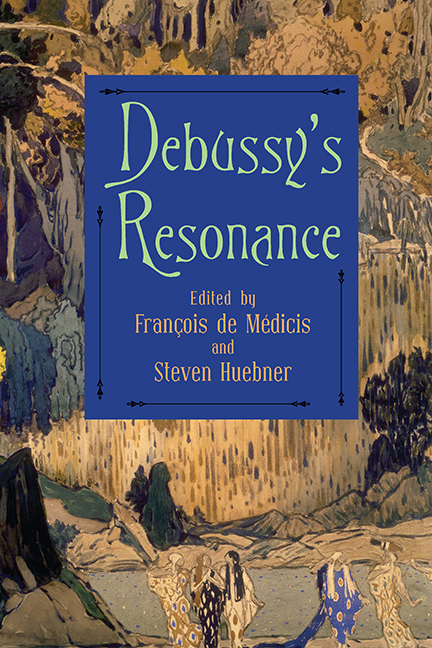Book contents
- Frontmatter
- Contents
- List of Illustrations
- Acknowledgments
- List of Abbreviations
- Introduction
- Part One Historiographical and Editorial Issues
- Part Two Style and Genre
- Part Three History and Hermeneutics
- 10 Debussy and Japanese Prints
- 11 “Les sons … tournent”: Debussy, the Waltz, and Embodied Hermeneutics
- 12 Secrets and Lies, or the Truth About Pelléas
- 13 Vertige!: Debussy, Mallarmé, and the Edge of Language
- Part Four Theoretical Issues
- Part Five Performance and Reception
- List of Contributors
- Index
11 - “Les sons … tournent”: Debussy, the Waltz, and Embodied Hermeneutics
from Part Three - History and Hermeneutics
Published online by Cambridge University Press: 27 July 2019
- Frontmatter
- Contents
- List of Illustrations
- Acknowledgments
- List of Abbreviations
- Introduction
- Part One Historiographical and Editorial Issues
- Part Two Style and Genre
- Part Three History and Hermeneutics
- 10 Debussy and Japanese Prints
- 11 “Les sons … tournent”: Debussy, the Waltz, and Embodied Hermeneutics
- 12 Secrets and Lies, or the Truth About Pelléas
- 13 Vertige!: Debussy, Mallarmé, and the Edge of Language
- Part Four Theoretical Issues
- Part Five Performance and Reception
- List of Contributors
- Index
Summary
Introduction
Claude Debussy's prelude no. 4, book 1, often referred to by the epigraph “Les sons et les parfums tournent dans l'air du soir” (hereafter, “Les sons”), is shown in example 11.1. The opening measures exhibit generic markers of the waltz, nineteenth-century Europe's most popular dance. The low A on the downbeat followed by chords in the middle register of the piano on beats two and three realize the conventional waltz accompaniment. The arch contour and rhythm of the melody, too, are signatures of the genre. All three features can be found in numerous waltzes from the first half of the nineteenth century, such as Schubert's Valse noble no. 6 and the first theme of Chopin's Grande valse brillante, op. 18, shown in examples 11.2 and 11.3. Still, “Les sons” can hardly be considered a waltz in a generic sense. Unlike Chopin's op. 18, which also begins in a state of metrical ambiguity but soon falls into recognizable patterns, “Les sons” fails to establish and maintain the triple meter essential to the waltz. Indeed, the meter becomes more obscure over the course of the opening eight measures. Other factors mitigating conscious perception of the waltz include tempos that push and pull irregularly, phrases of irregular lengths, interruption of textures by caesurae, and harmonic structures at odds with the tonal norms that reinforce the phrasing and form of nineteenth-century waltzes.
The tension between features of “Les sons” that derive recognizably from the waltz and features that resist assimilation to the dance's generic norms has informed recent interpretations of the prelude. In order to reconcile these apparently divergent musical elements, such interpretations employ a hermeneutic strategy that posits “Les sons” as a kind of phenomenological transcript of another listener's experience. This other listener remembers, imagines, or perhaps distractedly attends to a waltz, hearing it as something other than what it actually is. In turn, we hear only what presents itself to this listener's consciousness, e.g., a “faded, half-grasped memory,” or an “interpenetration of perception and remembrance.” Baudelaire's poem “Harmonie du soir,” from which Debussy drew the piece's epigraph, is then enlisted as support for the general mnemonic conceit and the particulars of each interpretation.
- Type
- Chapter
- Information
- Debussy's Resonance , pp. 326 - 352Publisher: Boydell & BrewerPrint publication year: 2018



